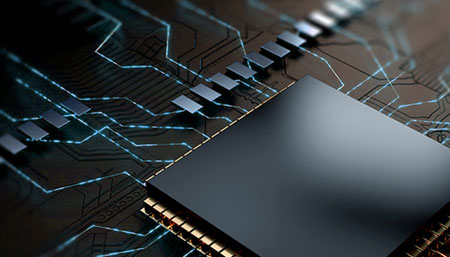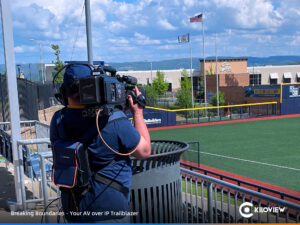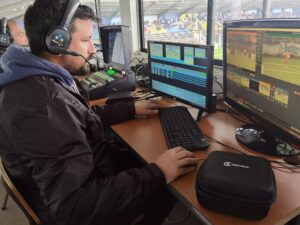As an important communication tool for modern business and organizations, video conferencing is increasingly important and used by all walks of life. With the spread of the epidemic, video conferencing has become a new way where people communicate at work. There are two solutions for it, including software video conference system and hardware system. Individuals or groups in different places, with various communication transmission media, distribute the static or dynamic images, voice, text, pictures and other materials to each other’s computer. Thus geographically located users can exchange information with the help of graphics, sound and other methods to better their understanding of content.

With the evolution of 5G technology, issues such as bandwidth and delay can be eased to a certain extent, but the requirements for voice and video quality in audio and video conferences will become higher and higher. Video conferencing technology covers a lot of audio and video technology directions, including audio and video codec, network transmission, weak network countermeasures and QoE, audio 3A, high-concurrency server distribution, etc., all of which require extremely low latency. Real-time transmission has greatly increased the technical threshold of video conferencing. So, as for video conferencing, are we choosing a software solution or a hardware solution?
Software video conference system
Video systems are placed in a conference room with expensive equipment, which needs to be set up, monitored and maintained by an IT person. With software video conference system users can use their own laptops to hold video conferences via Internet anytime and anywhere.
However, the audio of the traditional software video conference system has been criticized for problems with issues such as distortion and echo, and some users pointed out that the software picture delay is relatively long due to frame loss. On a small video conference, it can be a fair choice. While be it a larger conference which requires higher image quality, low delay, and higher definition, a hardware solution can be adopted.
Audio and video hardware codec transmission scheme
The hardware video conference solution adopts real-time and high-efficiency codec technology, which can integrate video preprocessing, video optimization, and audio optimization technology to further improve audio and video effects. Its video quality is generally higher than software products, and video and audio synchronization is also easy to achieve. Of course, the hardware video conference can also be set up and operated via a PC, which is convenient for control and management of large-scale conferences. In addition, hardware video conference equipment has very low power consumption and good stability.
At present, most video conferences use NDI low-latency solutions, as NDI is a high-performance IP-based video standard, which enables anyone to use real-time, ultra-low-latency on Gigabit networks etc. NDI protocol, by the way, is also compatible with software such as Tencent conference system, ZoomUs conference system with NDI automatically discovering the camera video source. NDI also eases your worries in SDI/HDMI wiring connection only if the camera and the video encoder are connected – you do not need to bebothered by factors such as space, distance and access rights, not to mention laying audio and video cables among different locations. In addition, you do not need an engineering team – It’s all to do with an IP network, you can connect various production equipment in different locations – The most cost-effective solution ever with an end-to-end delay of the NDI codec transmission scheme as low as 80ms.
Network delay
Based on hardware: less (about 100ms)
Based on software: more (about 1 second)
Stability
Based on hardware: with strong stability
Software-based: fair
Usage range:
Based on software: Wide application range, for both individuals and enterprises.
Hardware-based: Wide application range, for individuals, enterprises and more scenarios including video conferencing, surgical teaching, campus meetings, etc.
In the future, with the development of remote conferencing systems, video conferencing will go into more industries and areas, and the coverage will continue to deepen, especially in the government, finance, education, and medical fields. Kiloview is soon launching a low-cost video conferencing solution in January, 2021 – U40 NDI encoder. This NDI encoder is the perfect companion for conference cameras. It supports 4K P60 input, HDMI/USB/IP to NDI, with convenient installation with network cable, conference cameras, HDMI cameras, USB cameras, video sources, etc., U40 can be easily connected to the NDI world and enjoy the advantages of ultra-high image quality and video IP-based transmission with ultra-low latency.
For video conferencing, whether you choose a software solution or a hardware solution, we here offer a cost-effective and high-quality solution. With the rapid development of audio and video technology, the high stability and low latency technology of the NDI live broadcast protocol has become a hot topic. At present the AV industry has shown great interest in employing more convenient and cost-effective equipment to help users enjoy a low-latency, low-bandwidth, and interconnected transmission method.










